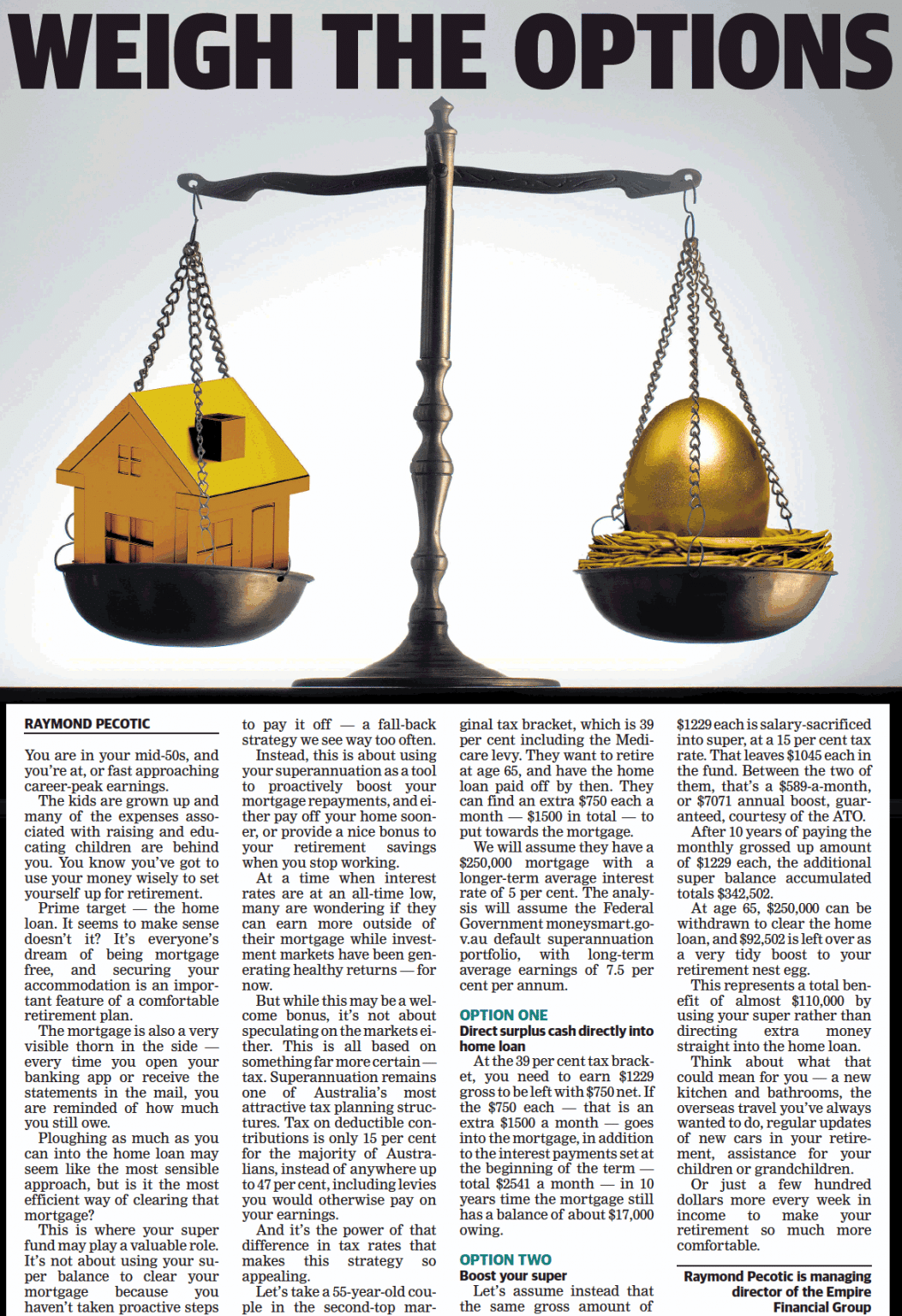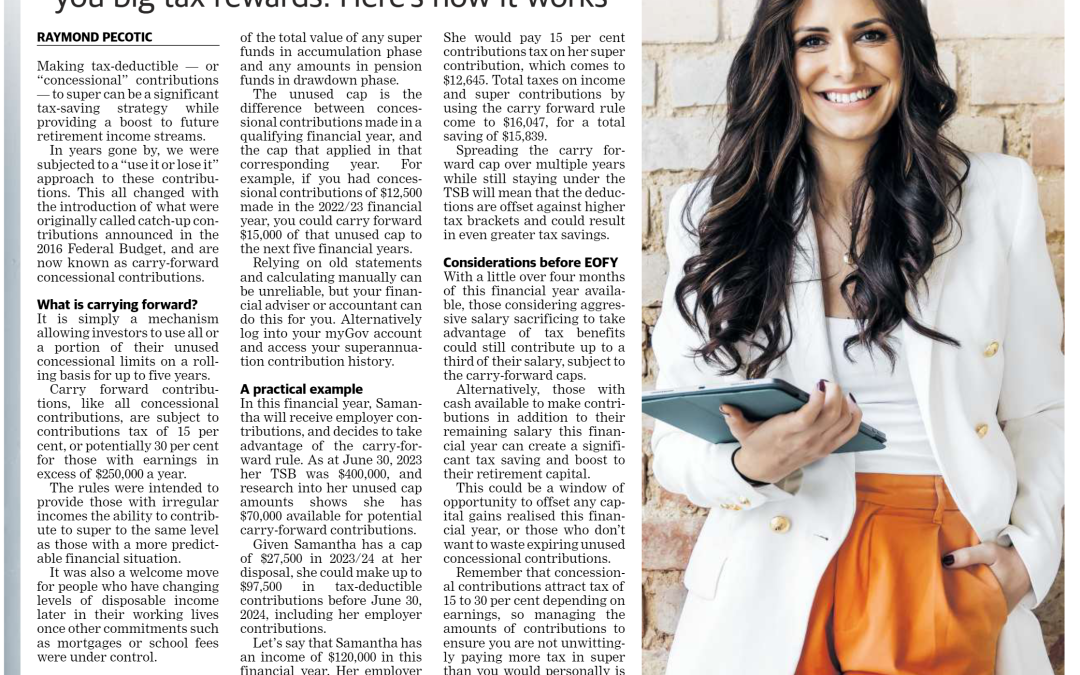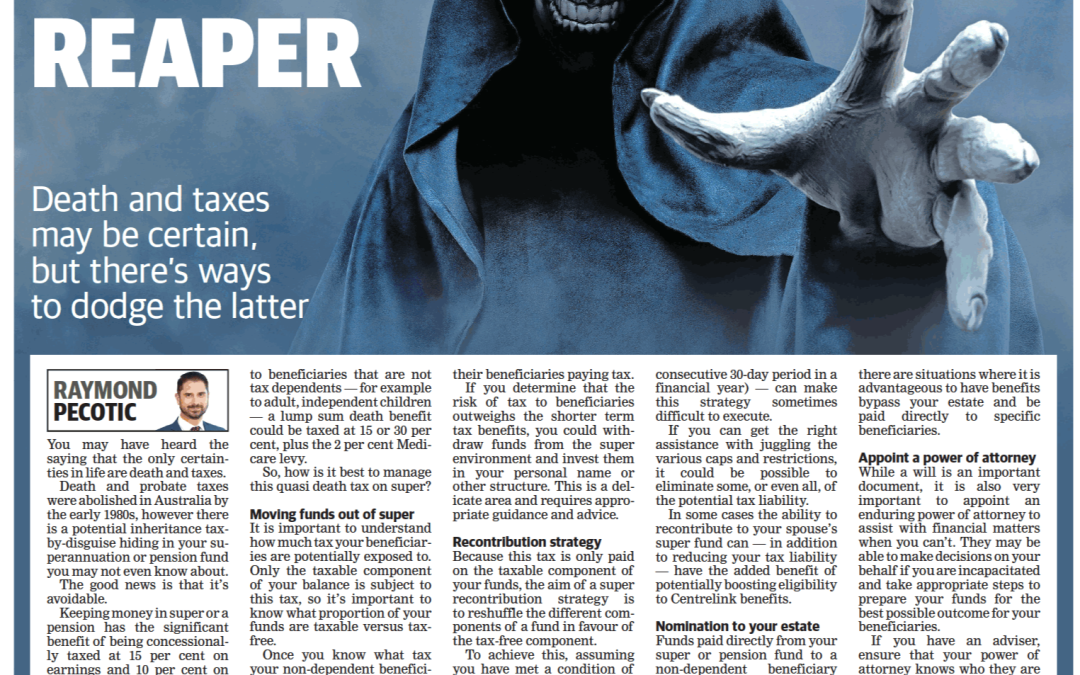This article was written by Raymond Pecotic and first published in The West Australian, Your Money, 11 October 2021
You are in your mid-50s. You’re at, or fast approaching career peak earnings. The kids are grown up and many of the expenses associated with raising and educating children are behind you. You know you’ve got to use your money wisely to set yourself up for retirement.
Prime target: the home loan.
It seems to make sense doesn’t it? It’s everyone’s dream of being mortgage free, and securing your accommodation is an important feature of a comfortable retirement plan.
The mortgage is also a very visible thorn in the side – every time you open your banking app or receive the statements in the mail, you are reminded of how much you still owe.
Ploughing as much as you can into the home loan may seem like the most sensible approach, but is it the most efficient way of clearing that mortgage?
This is where your super fund may play a valuable role.
This is not about using your super balance to clear your mortgage because you haven’t taken proactive steps to pay it off – a fall back strategy we see way too often.
Instead this is about is using your superannuation as a tool to proactively boost your mortgage repayments, and either pay off your home sooner, or provide a nice bonus to your retirement savings when you stop working.
At a time when interest rates are at an all time low, many are wondering if they can earn more outside of their mortgage while investment markets have been generating healthy returns (for now).
But while this may be a welcome bonus, this is not about speculating on the markets either.
This is all based on something far more certain – tax.
Superannuation remains one of Australia’s most attractive tax planning structures. Tax on deductible contributions is only 15 per cent for the majority of Australians, instead of anywhere up to 47 per cent including levies you’d otherwise pay on your earnings.
And it’s the power of that difference in tax rates that makes this strategy so appealing.
Let’s take a 55-year-old couple in the second-top marginal tax bracket, which is 39 per cent including the Medicare levy.
They are wanting to retire at age 65, and have the home loan paid off by then. They can find an extra $750 each per month ($1500 in total) to put towards the mortgage.
We will assume they have a $250,000 mortgage with a longer-term average interest rate of 5 per cent.
The analysis will assume the Federal Government moneysmart.gov.au default superannuation portfolio, with long-term average earnings of 7.5 per cent per annum.
OPTION ONE
DIRECT SURPLUS CASH DIRECTLY INTO HOME LOAN
At the 39 per cent tax bracket, you need to earn $1229 gross to be left with $750 net.
If the $750 each, that is an extra $1500 per month, goes into the mortgage, in addition to the interest payments set at the beginning of the term (total $2541 per month) in 10 years time the mortgage still has a balance of approximately $17 000 owing.
OPTION TWO
BOOST YOUR SUPER
Let’s assume instead that the same gross amount of $1229 each is salary sacrificed into super, at a 15 per cent tax rate. That leaves $1045 each in the fund. Between the two of them, that’s a $589 per month, or $7071 annual boost, guaranteed, courtesy of the ATO.
After 10 years of paying the monthly grossed up amount of $1229 each, the additional super balance accumulated totals $342 502 . At age 65, $250,000 can be withdrawn to clear the home loan, and $92 502 is left over as a very tidy boost to your retirement nest egg.
This represents a total benefit of almost $110 000 by utilising your super rather than directing extra money straight into the home loan.
Think about what that could mean for you – a new kitchen and bathrooms, the overseas travel you’ve always wanted to do, regular updates of new cars in your retirement, assistance for your children or grandchildren – or just a few hundred dollars more every week in income to make your retirement so much more comfortable.
Raymond Pecotic is the managing director of Empire Financial Group.



